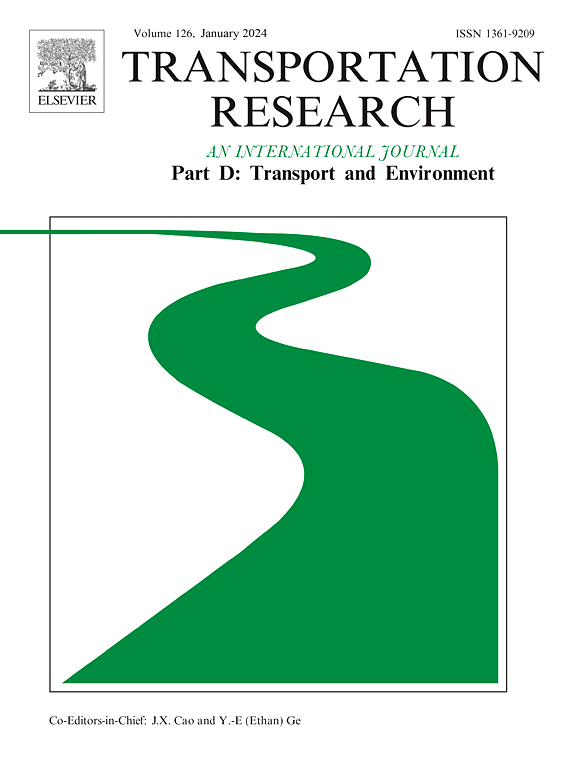将辅助交通与正规公共交通系统相结合的战术规划框架
IF 7.7
1区 工程技术
Q1 ENVIRONMENTAL STUDIES
Transportation Research Part D-transport and Environment
Pub Date : 2024-10-03
DOI:10.1016/j.trd.2024.104438
引用次数: 0
摘要
尽管非正规辅助交通服务在交通系统中发挥着至关重要的作用,但其规划以及与正规公共交通系统的整合却很少受到关注。我们提出了一个在战术规划层面整合公共交通和辅助交通的新框架。我们将这种整合表述为一个分为两个步骤的公交网络频率设置问题(TNFSP)。TNFSP 的第一步涉及基于头程的全网多模式公交分配,第二步是综合频率优化。提出的方法适用于维萨卡帕特南的网络,这是印度的一个中型城市,其辅助公交和正规公交的比例分别为 9% 和 18%。在使用实际数据验证基础模型后,我们进行了基于场景的分析,得出了两个系统的最佳车队规模、网络配置和频率,以最大限度地减少外部性。与目前单独规划系统的方法相比,综合规划和频率优化可使旅行时间和排放量减少 50-60%。本文章由计算机程序翻译,如有差异,请以英文原文为准。
A tactical planning framework to integrate paratransit with formal public transport systems
Despite the crucial role of informal paratransit services in mobility systems, their planning and integration with formal public transport systems have received limited attention. We present a novel framework to integrate public transport and paratransit at the tactical planning level. We formulate this integration as a two-step Transit Network Frequency Setting Problem (TNFSP). The first step of TNFSP involves a headway-based network-wide multi-modal transit assignment, followed by an integrated frequency optimisation in the second step. The proposed approach is applied to the network of Visakhapatnam, a medium-sized Indian city with 9 % and 18 % share of paratransit and formal transit. After validating the base model using real-world data, we perform scenario-based analysis to derive the optimal fleet size, network configuration, and frequency of both systems to minimise externalities. Integrated planning and frequency optimization can lead to 50–60 % reduction in travel time and emissions compared to current approach of separately planned systems.
求助全文
通过发布文献求助,成功后即可免费获取论文全文。
去求助
来源期刊
CiteScore
14.40
自引率
9.20%
发文量
314
审稿时长
39 days
期刊介绍:
Transportation Research Part D: Transport and Environment focuses on original research exploring the environmental impacts of transportation, policy responses to these impacts, and their implications for transportation system design, planning, and management. The journal comprehensively covers the interaction between transportation and the environment, ranging from local effects on specific geographical areas to global implications such as natural resource depletion and atmospheric pollution.
We welcome research papers across all transportation modes, including maritime, air, and land transportation, assessing their environmental impacts broadly. Papers addressing both mobile aspects and transportation infrastructure are considered. The journal prioritizes empirical findings and policy responses of regulatory, planning, technical, or fiscal nature. Articles are policy-driven, accessible, and applicable to readers from diverse disciplines, emphasizing relevance and practicality. We encourage interdisciplinary submissions and welcome contributions from economically developing and advanced countries alike, reflecting our international orientation.

 求助内容:
求助内容: 应助结果提醒方式:
应助结果提醒方式:


